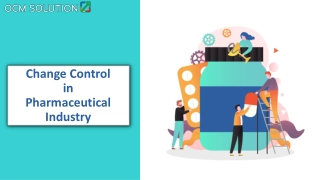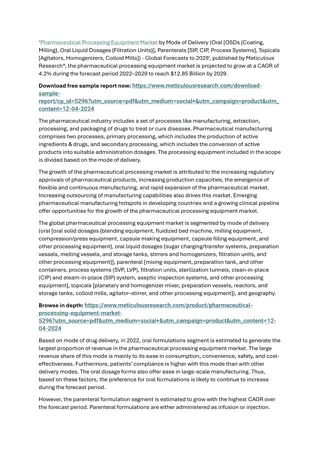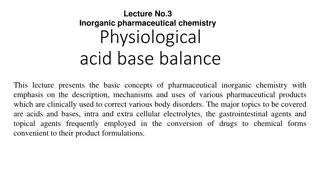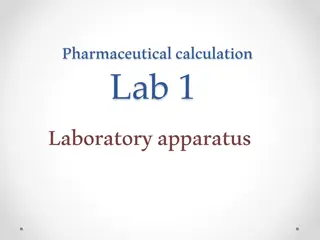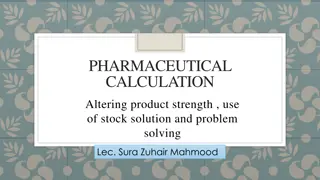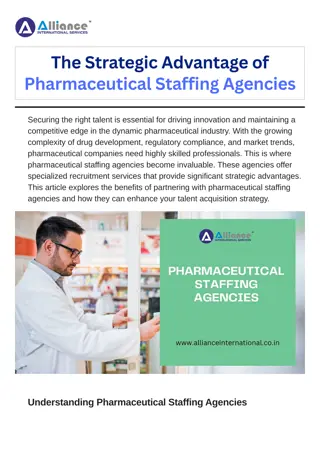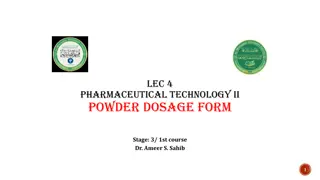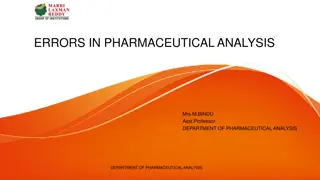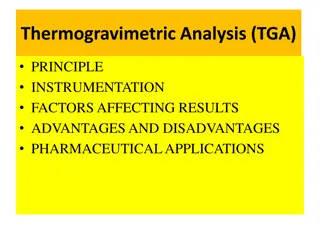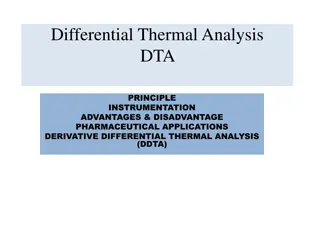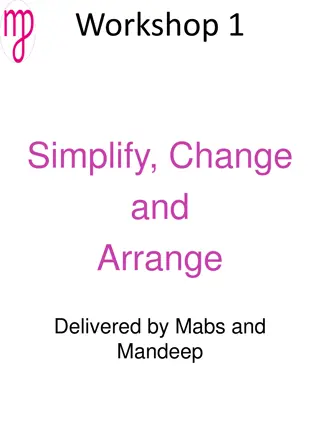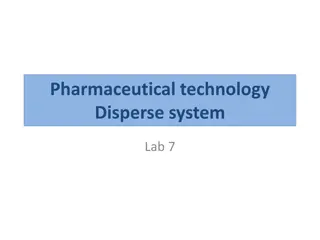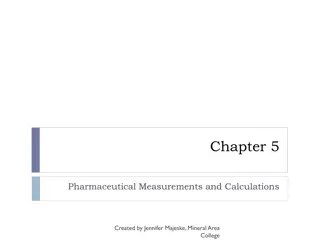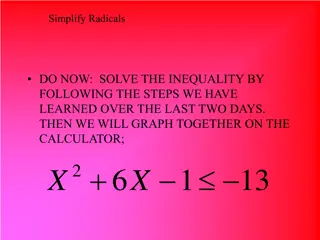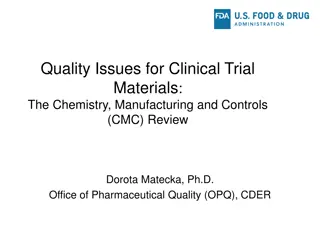Simplifying Pharmaceutical Calculations Made Easy
Learn how to simplify medication volume calculations by using multipliers instead of traditional division methods. This approach makes it easier to determine the correct dosage quickly and accurately. Examples with Fentanyl, Ondansetron, and Naloxone illustrate the concept in practice. Discover why this method works consistently every time.
Download Presentation

Please find below an Image/Link to download the presentation.
The content on the website is provided AS IS for your information and personal use only. It may not be sold, licensed, or shared on other websites without obtaining consent from the author.If you encounter any issues during the download, it is possible that the publisher has removed the file from their server.
You are allowed to download the files provided on this website for personal or commercial use, subject to the condition that they are used lawfully. All files are the property of their respective owners.
The content on the website is provided AS IS for your information and personal use only. It may not be sold, licensed, or shared on other websites without obtaining consent from the author.
E N D
Presentation Transcript
Pharmaceutical Calculations Made Easy Deb Wagner, Pharm D Pharmacy EMS Coordinator
Simplifying How To Calculate a Medication Volume from a Concentration O Rather than trying to do the math based on the concentration of the drug i.e. mg/ml or mcg/ml O Think in terms of a factor of what multiplier times the concentration will equal a factor of 1 or a multiple thereof i.e. 10, 100 etc. O This manner will quickly allow you to either calculate a dose or double check your math O Let s have some examples of how this works
Fentanyl O Traditional math O Dose is 2mcg/kg for 80kg patient =160mcg O Then you would divide the dose (160mcg) by the concentration 50mcg/ml to get the volume to administer = 3.2ml O Debbie s math O Dose is 2mcg/kg for 80kg patient =160mcg O Take the 50mcg/ml concentration and multiply by 2 to get a factor of 100 O Multiply the dose 160mcg x 2 =320mcg O Adjust the decimal point accordingly or divide by 100 and you 3.2, the number of ml s
Ondansetron O Traditional math O Dose is 0.1mg/kg for a 27kg patient = 2.7mg O Then you would divide the dose 2.7mg by the concentration 2mg/ml for a volume =1.35ml O Debbie s math O Dose is 0.1mg/kg for a 27kg patient =2.7mg O Concentration is 2mg/ml so to get a factor of 10 you multiply by 5 O Take the dose 2.7mg x 5 = 13.5ml and adjust the decimal place accordingly or divide by a factor of 10 to get the volume 1.35ml
Naloxone O Traditional math O Dose is 0.1mg/kg for 17kg patient = 1.7mg O Concentration is 0.4mg/ml so you would divide 1.7 by 0.4 = 4.25ml O Debbie s math O Dose is 0.1mg/kg for 17kg patient =1.7ml O Concentration is 0.4mg/ml so 2.5 times 0.4 = 1 O Take the dose 1.7 x 2.5 = 4.25 (volume is correct as the ratio used was one)
Why This Works Every Time O Simply put it s sometimes easier to multiply than divide numbers in your head O It s easy to visualize 1, 10, or 100 O It s quick O Key is to always work with a concentration of (x) number of mcg s or mg s per 1ml O Once you have that it s easy O Now try it yourself



